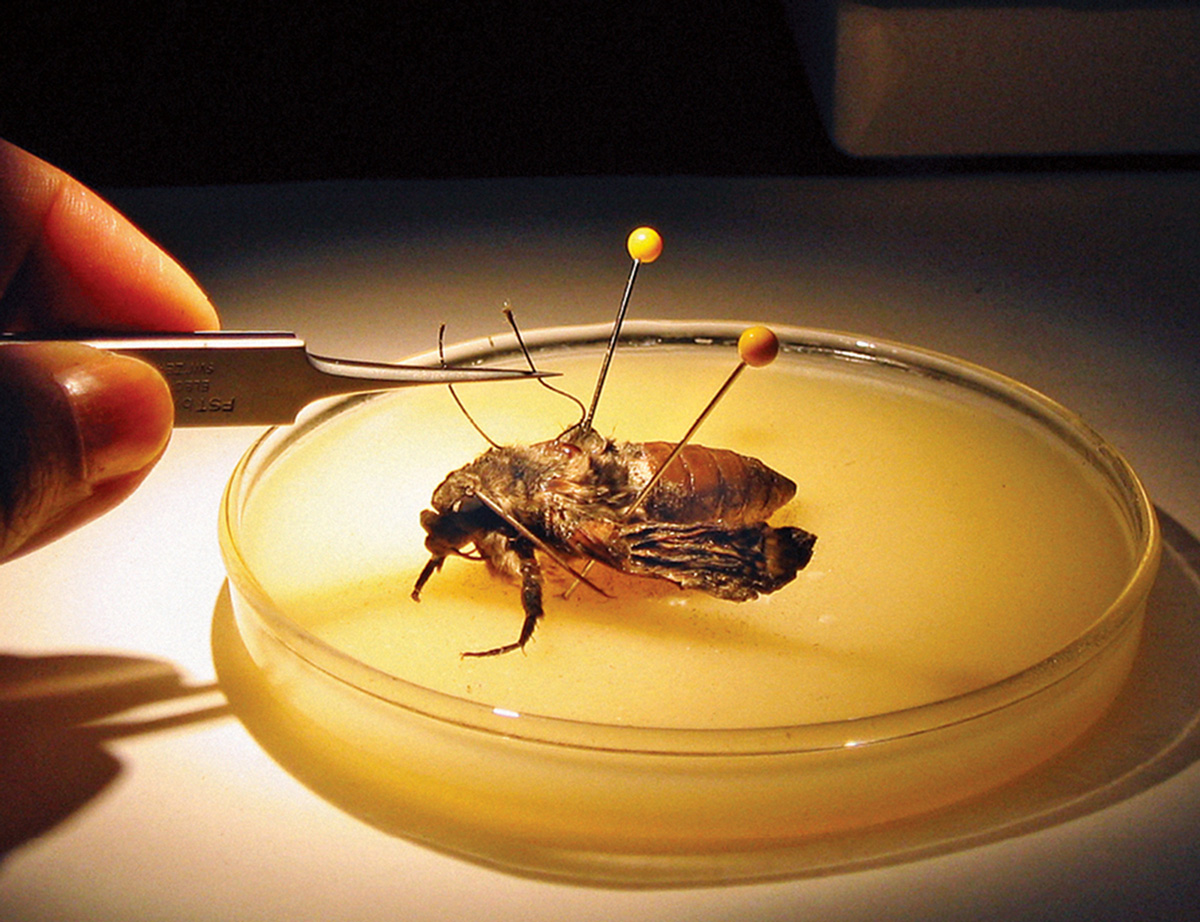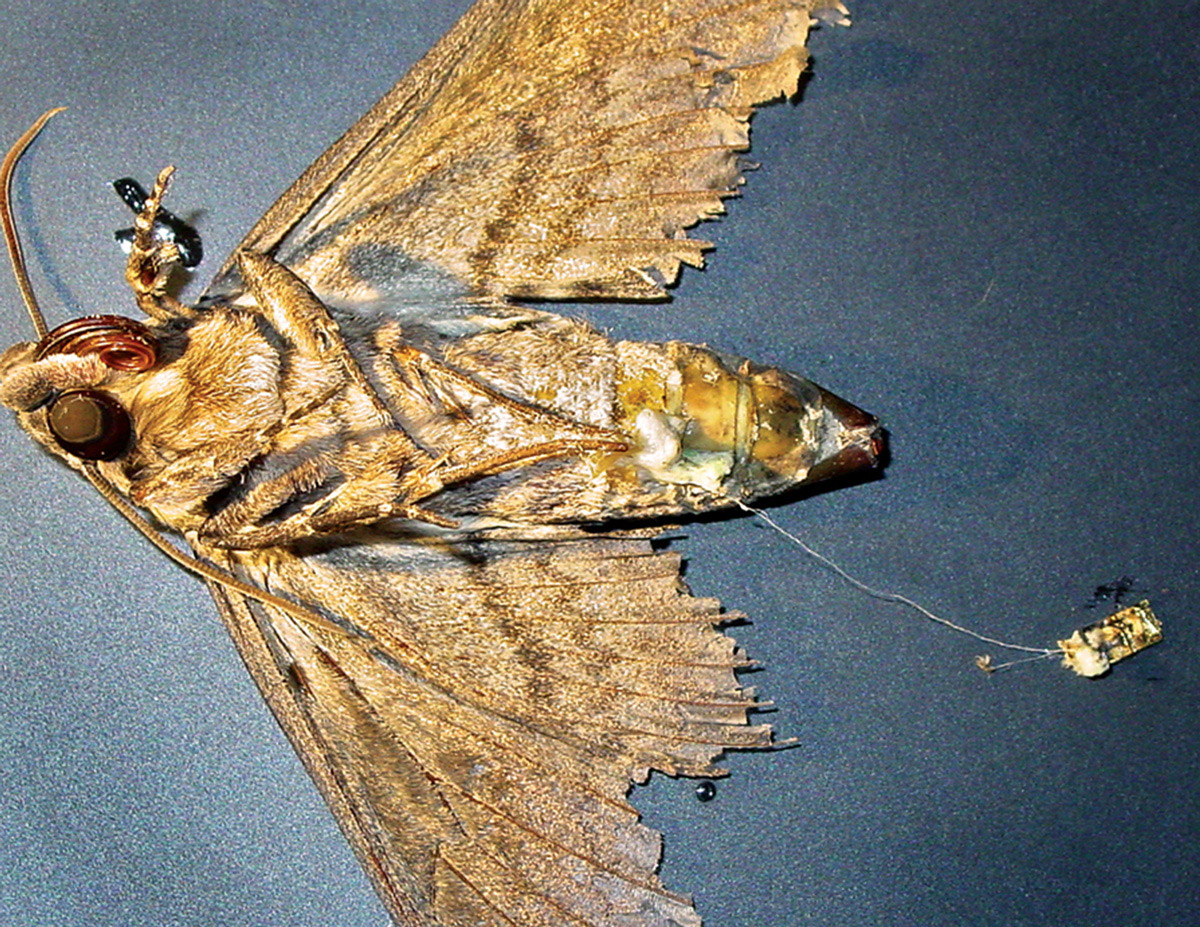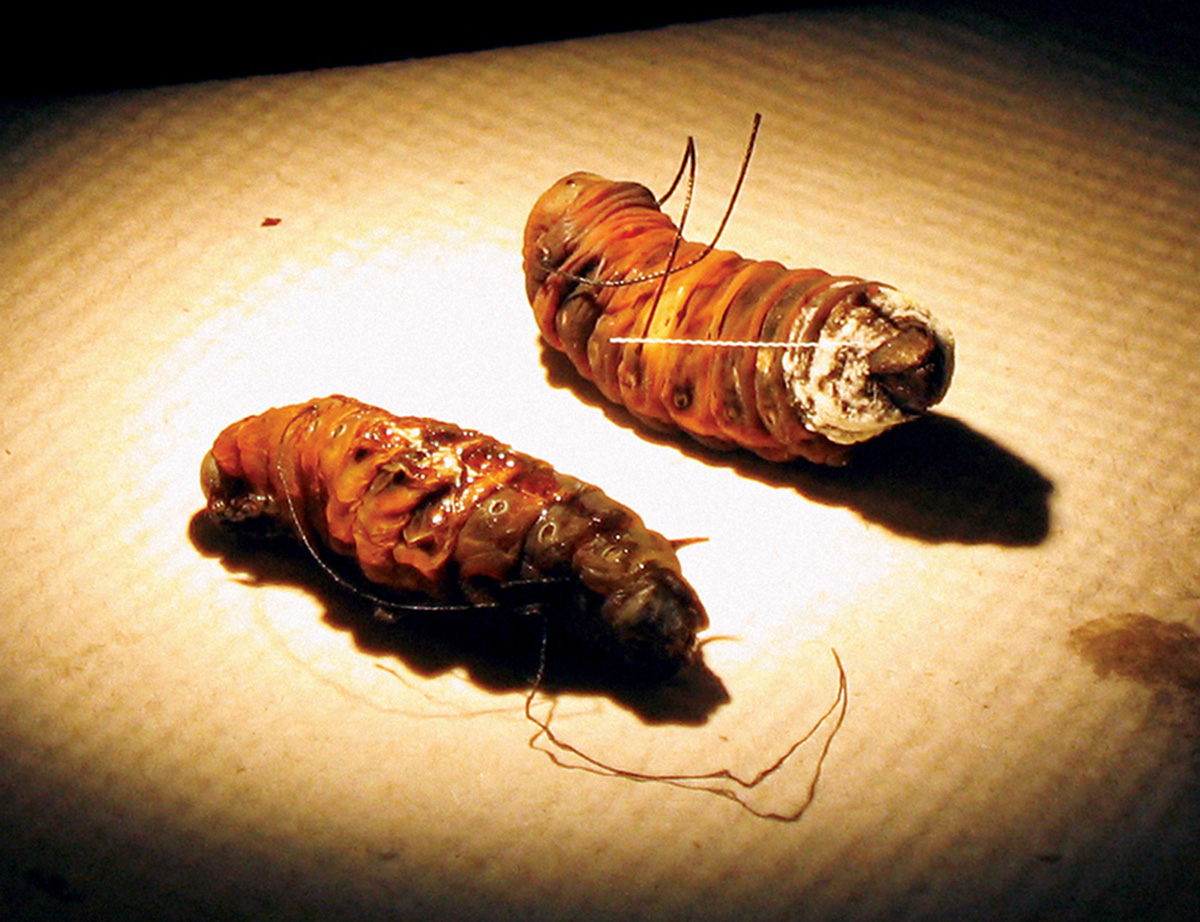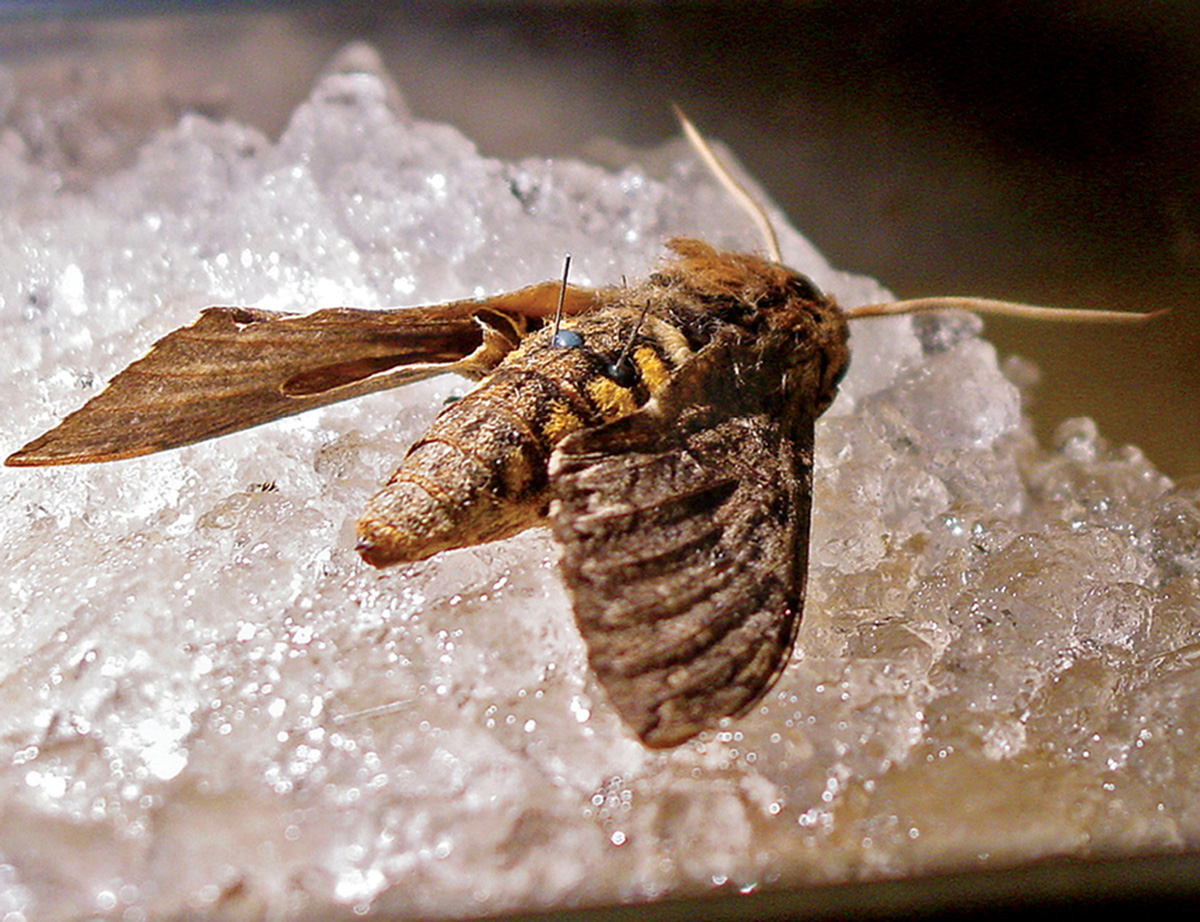Cybugs
Martial metamorphosis
Steve Featherstone

In March 2006, the Defense Advanced Research Projects Agency (DARPA) issued Presolicitation Notice BAA06-22 requesting research proposals “in the area of Hybrid Insect MEMS,” or “insect-cyborgs.” The program’s stated goal is the development of a remote-controlled or GPS-guided bug capable of flying, hopping, or swimming one hundred meters to a specified target, give or take five meters. In addition, the insect-cyborg must also be able to transmit data from onboard “gas sensors, microphones, video, etc.”
Months before DARPA’s solicitation to the scientific community, Ayesa Paul, a biology student at Cornell University, received a shipment of tobacco hornworm larvae and pupae from Carolina Biological Supply Company. Using a scalpel, forceps, and curved suture needles, she operated on the insects under the supervision of Dr. Amit Lal (who now manages DARPA’s insect-cyborg program). The results of her work were published last year in her thesis paper, “Surgically Implanted Micro-Platforms in Manduca sexta Moths,” which documents the manufacture, for the first time, of insect-cyborg prototypes.
Scientists have long studied the various artful means by which insects get from point A to point B. Insects fly and hover, flutter and glide. They crawl and wriggle, jump and hop. They swarm. They can scurry across slick linoleum, walk on windows, and scale walls. Some bugs swim in currents of rushing streams, some skitter across the glassy surfaces of ponds. In laboratories around the world, engineers funded by defense money build computer models and fabricate insect-inspired robots in an attempt to divine the complex secrets of insect locomotion. But fielding an army of insectoid robots would be prohibitively expensive.

Rather than building machines that act like insects, some engineers thought it would be easier, and cheaper, to build insects that act like machines. Past attempts at creating insect-machine hybrids have taken a path that any kindergartener could appreciate: gluing things to bugs, in this case, MEMS (micro electromechanical systems), which are tiny electrical devices such as miniature radio transmitters. The problem with this approach is that it favors the engineer’s genius in building inanimate objects, however sophisticated, over the biologist’s most basic understanding of how living organisms behave: the bugs either brushed off or shed the offending payload affixed to their bodies.
Paul’s innovation resides in devising a surgical protocol—she has applied for a patent on it—for putting things inside metamorphosing insects, avoiding altogether the problem of getting objects to stick to adult bugs. The surgery lasts no more than a minute—long enough for Paul to slice open the pupa’s tough outer shell, insert a biocompatible material such as silk thread, titanium wire, or silicon chips deep into the soft, almost liquid tissue of the bug’s still-evolving body, and then sew up the case, leaving only the smallest bits protruding as future interfaces for other, outboard systems. Then she waits. Ninety-five percent of the time, an adult hawk moth emerges a few days later, a survival rate equal to that of the non-surgical control group. The mysterious process of metamorphosis so thoroughly incorporates the foreign material into the adult moth’s flesh that removing it often kills the moth.

Given their unique abilities, sheer numbers, and extremely low cost, it was perhaps inevitable that insects would one day be pressed into military service. The trouble is that bugs, even “cybugs,” don’t make very good spy drones, for instance, because they’re beholden only to their instincts. They cannot be socialized to interact with humans. Thus, they cannot be reliably controlled. What’s a brigade commander to do with a cyborg moth that only transmits video surveillance of its quixotic battle with a bare light bulb?

There is no useful application, scientific or military, for Paul’s fuzzy, flying bio-bots, trailing thread and wire, shards of silicon sticking out of their thoraxes. Now that she has proved that adult moths can function normally with foreign material enmeshed in their flesh, however, the next step will be connecting MEMS devices to the moths. To help fund the experiment, Paul has applied for a DARPA grant under the Hybrid Insect MEMS program. She believes that biologists stand to gain much more from her work than the military, however. One day she would like to employ cyborg locusts bearing radio transmitters to study the unpredictable behavior of locust swarms, which, along with the highly toxic chemicals that humans use to try to stop them, devastate vast regions of Africa and South Asia. And she’s working on a second patent—a MEMS implant that stimulates a hawk moth’s flight muscles through electrical impulses—that marks another step toward DARPA’s improbable remote-controlled insect-cyborg.
Steve Featherstone is a writer and photographer from Syracuse, New York. His work has appeared in Harper’s, Granta, and The Baffler, among others. A book of his photographs, along with an essay by his colleague Paul Maliszewski, is forthcoming from Princeton Architectural Press.